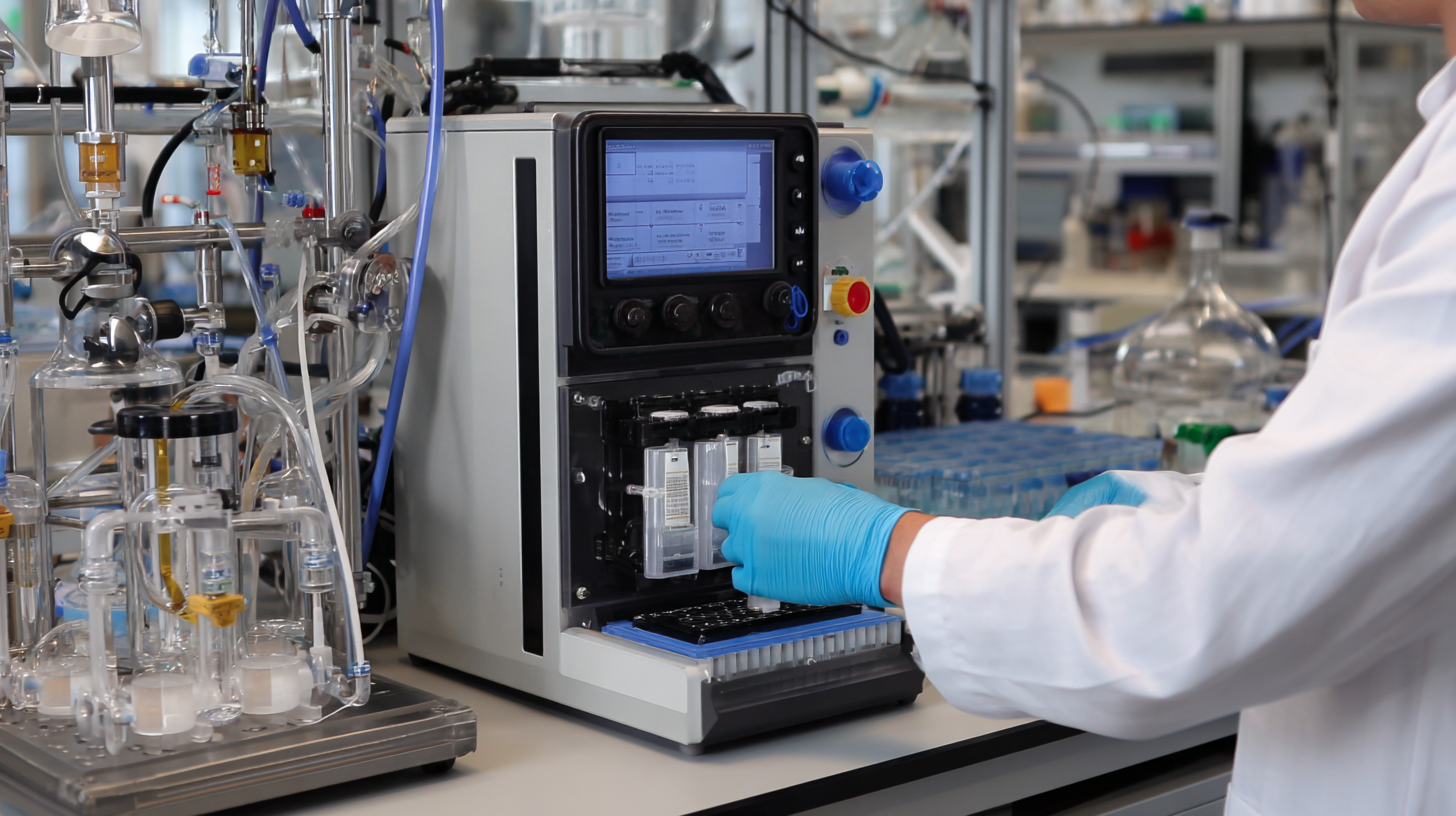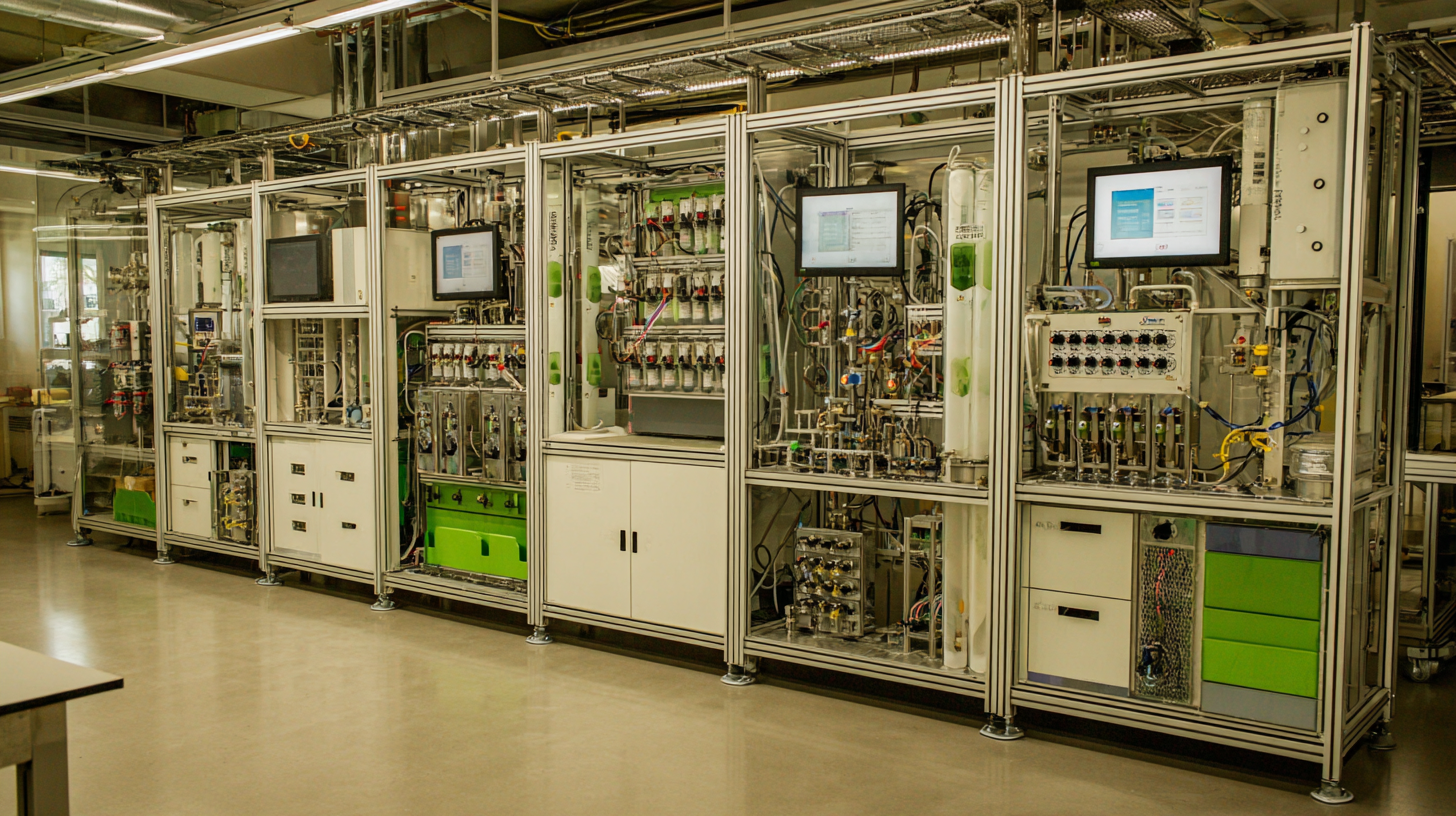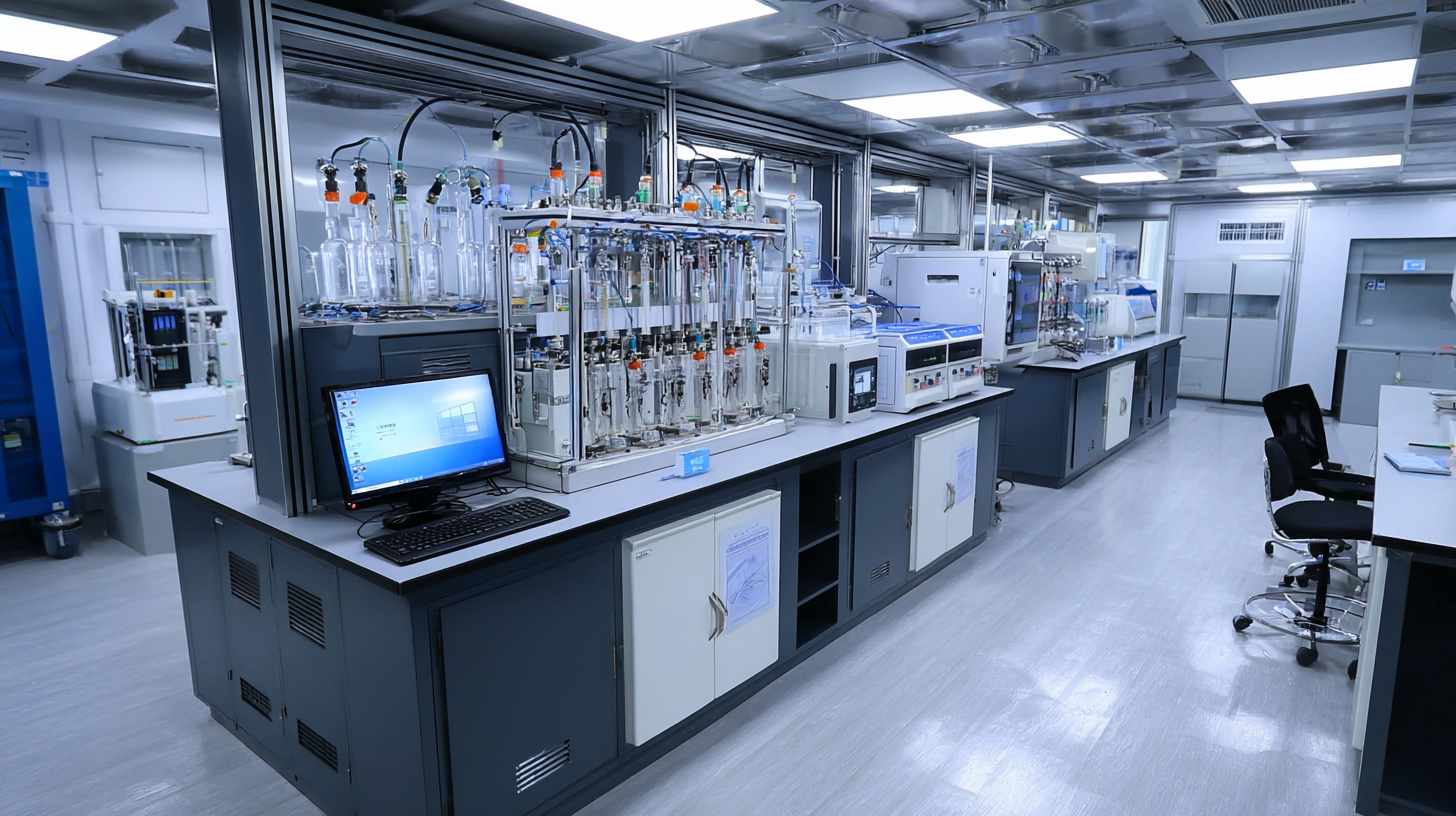Leave Your Message
Request a Quote
In the evolving landscape of modern research, Laboratory Ultrafiltration has emerged as a pivotal technique, driving innovation across various fields. This method, which employs semi-permeable membranes to separate particles based on size, is not only transforming traditional filtration processes but is also unveiling unique applications that enhance experimental accuracy and efficiency. From biotechnology to environmental science, researchers are harnessing the power of Laboratory Ultrafiltration to isolate proteins, purify water, and recover valuable materials from waste streams. This blog will explore several distinctive examples of how Laboratory Ultrafiltration is being utilized in cutting-edge research, highlighting its versatility and significant impact on advancing scientific knowledge and sustainable practices. Through these case studies, we aim to demonstrate the indispensable role of Laboratory Ultrafiltration in addressing contemporary challenges and reshaping our approach to modern research methodologies.

Ultrafiltration is gaining traction as a pivotal technique in environmental monitoring and water purification. This method, which employs semi-permeable membranes to separate particles and solutes based on size, provides researchers with a powerful tool to assess water quality and manage contaminants effectively. By targeting micro-pollutants and pathogens, ultrafiltration can reveal the hidden threats that traditional water treatment methods might overlook, thus ensuring safer drinking water and healthier ecosystems.
In the realm of environmental monitoring, ultrafiltration assists in analyzing various water sources, from rivers to wastewater treatment plants. Its ability to concentrate pollutants and provide a cleaner sample allows for more accurate assessments of water quality. This precision stands crucial for regulatory compliance and environmental protection, aiding scientists and decision-makers in mitigating the impacts of pollution. With growing concerns over water scarcity and contamination, the adaptability of ultrafiltration techniques to different environmental contexts highlights its significance in modern research and practical applications.
| Application Area | Description | Key Benefits | Typical Samples |
|---|---|---|---|
| Drinking Water Treatment | Removal of contaminants such as bacteria and viruses from source water. | Enhanced water safety, reduction of hazardous substances. | Groundwater, surface water. |
| Wastewater Treatment | Separation of suspended solids and macromolecular contaminants. | Lower environmental impact, water reuse potential. | Municipal wastewater, industrial effluents. |
| Environmental Monitoring | Detection of pollutants and toxic substances in water bodies. | Early warning systems for pollution, regulatory compliance. | Rivers, lakes, and oceans. |
| Food and Beverage Industry | Clarification, concentration, and purification of beverages. | Improved product quality, extended shelf life. | Juices, wines, and dairy products. |
| Pharmaceutical Manufacturing | Purification and concentration of active pharmaceutical ingredients. | Increased yield, reduced processing time. | Active compounds, solvents. |
Recent advancements in pharmaceutical development have underscored the pivotal role of laboratory ultrafiltration techniques. These methods enhance the efficiency of drug formulation processes by enabling the selective retention of desired molecules, while efficiently removing impurities and smaller contaminants. The application of ultrafiltration is particularly beneficial in the concentration and purification of biopharmaceuticals, such as monoclonal antibodies, which are critical in modern therapeutic strategies.
Moreover, ultrafiltration technologies are continually evolving, allowing researchers to manipulate membrane characteristics to better suit specific pharmaceutical requirements. Innovations such as adjustable pore sizes and improved membrane materials have led to enhanced separation capabilities, facilitating the development of more effective drug delivery systems. As a result, this approach not only streamlines production but also improves the overall safety and efficacy of pharmaceutical products, fostering a new era of drug discovery and development.
Ultrafiltration technology has emerged as a transformative tool in biotechnology research, particularly in enhancing bioseparations. This method facilitates the efficient separation of biomolecules based on size and charge, significantly optimizing the purification processes in biomanufacturing. According to a report from Research and Markets, the global ultrafiltration market is expected to reach USD 4.88 billion by 2025, driven by its increasing applications in the pharmaceutical, food, and biotech industries.

In recent years, ultrafiltration has found innovative applications in organ-on-a-chip (OoC) technologies. These microengineered systems use ultrafiltration membranes to create a dynamic environment that closely mimics human organ functions. For instance, research has shown that integrating ultrafiltration with kidney-on-a-chip platforms not only enhances drug testing efficacy but also provides insights into renal pathophysiology.
Studies indicate that these models can improve predictive accuracy for human responses by up to 90% compared to traditional methods, revolutionizing nephrology research and paving the way for personalized medicine. As researchers continue to push the boundaries of ultrafiltration, its role in advancing biotechnology remains pivotal, offering unprecedented insights into complex biological processes.
Ultrafiltration has emerged as a powerful tool in modern agricultural science, particularly in the recovery of nutrients from various waste streams. This membrane-based separation technology enables researchers to efficiently isolate valuable components such as nitrogen, phosphorus, and potassium from agricultural runoff, processing byproducts, and even wastewater. By employing ultrafiltration, scientists can convert these nutrients into a usable form, thereby reducing environmental pollution while simultaneously supporting sustainable farming practices.

One of the most innovative applications of ultrafiltration in agriculture involves the reclamation of nutrients from animal manure. Traditional disposal methods can lead to nutrient runoff and water contamination; however, ultrafiltration offers a viable alternative. By processing manure through specially designed membranes, researchers can extract concentrated nutrient solutions that can be directly utilized as fertilizers. This not only minimizes waste but also transforms a potential environmental liability into a valuable resource, ultimately contributing to the development of a more circular agricultural economy.
Ultrafiltration has become an indispensable technique in modern bioscience, particularly in the realms of protein characterization and bioprocess optimization. This membrane filtration process, which separates particles based on size, is vital for purifying proteins while maintaining their functional integrity. According to a report from MarketsandMarkets, the global ultrafiltration market is projected to grow from $2.2 billion in 2021 to $3.5 billion by 2026, reflecting the increasing reliance on this method in biopharmaceuticals.
In protein characterization, ultrafiltration enables researchers to concentrate proteins from complex mixtures and remove smaller contaminants. This is crucial for characterizing protein structure, function, and interactions. For instance, a recent study highlighted that applying ultrafiltration strategies can enhance protein yield by up to 30%, ultimately facilitating more detailed structural analyses using advanced techniques like mass spectrometry.
On the bioprocess optimization front, ultrafiltration plays a key role in streamlining purification workflows, which is essential for cost-effective biomanufacturing. It allows for continuous processing and real-time monitoring, reducing the time and resources spent on traditional purification methods. A case study published in the Journal of Membrane Science showcased a biopharmaceutical company that improved its production efficiency by 25% by integrating ultrafiltration into its downstream processing. Such advancements underscore the critical impact of ultrafiltration in the evolution of bioprocessing technologies.
This bar chart depicts the purification yield of different proteins using laboratory ultrafiltration techniques, highlighting the effectiveness of ultrafiltration in protein characterization and optimization of bioprocesses.

